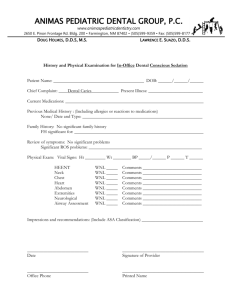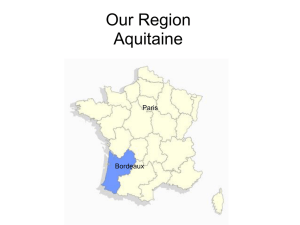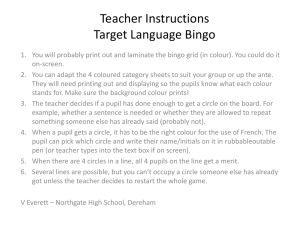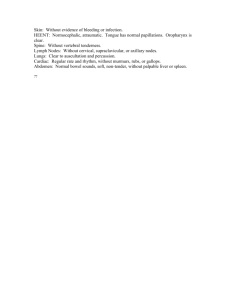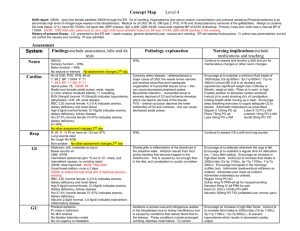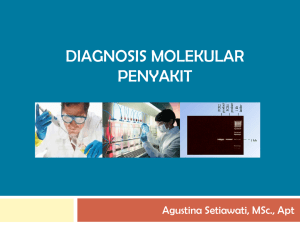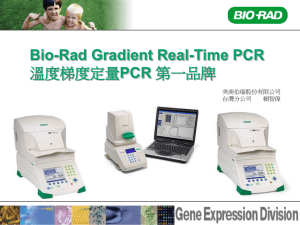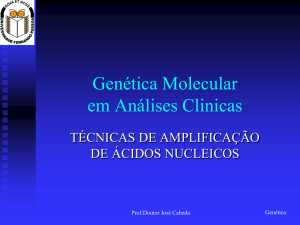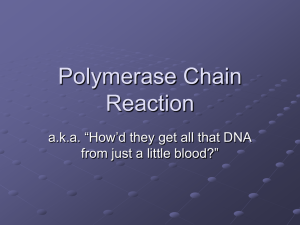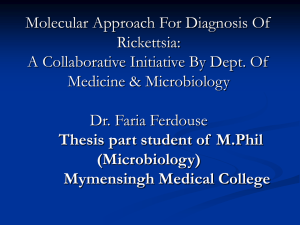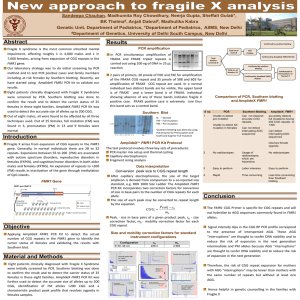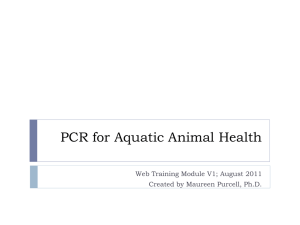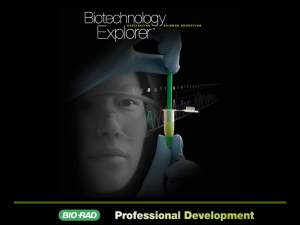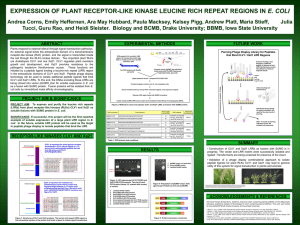components of the pcr
advertisement
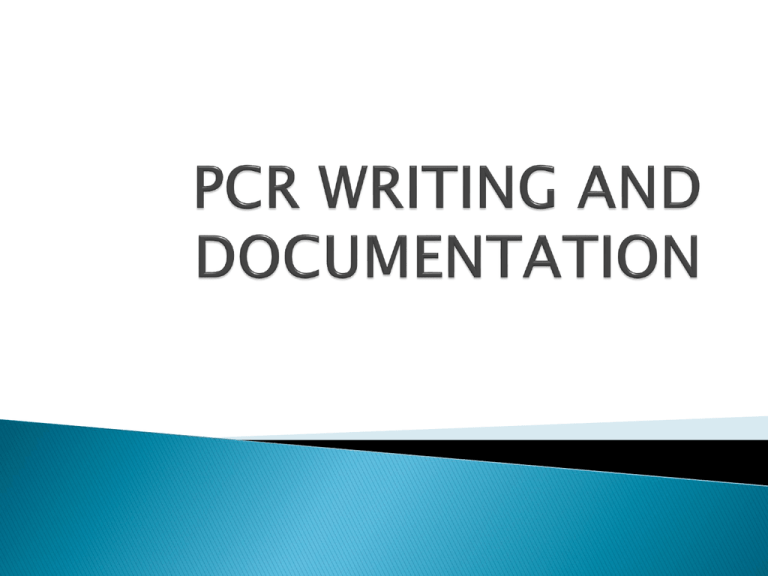
Requirements Musts/Omissions Documentation Subjective v. Objective Assessments Comments Redundancy Acceptable / Authorized Medical Abbreviations GCS RMA’s / Forms Rear of PCR Telling a Story ◦ Pre-hospital – These are issues and conditions the ED staff can’t see and don’t know about. Important to document. Accidents – condition of car, position of patient Homes – condition, temperature, medical devices Nursing facilities – need I say more ◦ Care – Simple…What treatment did you provide to the patient Again, if it’s not visible, the ED staff won’t know what you did Self treatment prior to EMS arrival ◦ Report – As by it’s very definition: (noun) a usually detailed account or statement (transitive verb) To relate the words or sense of To make a written record or summary of To give a formal or official account or statement of ◦ Report Examples Book reports Accident reports Report cards Reporters ◦ Report ◦ TELL A STORY ◦ RELAY INFORMATION Date (mm/dd/yr) 132186 07/18/13 Can be completed post call 05129 32420 Agency Name – BSBRA Dispatch Information ◦ Plain English – Chest Pain ◦ EMD Code – 10D3 Call Location ◦ As specific as possible ◦ Address ◦ “IFO”, “in vicinity of”, intersection, direction, business name, etc. Location Code – 5154 (Islip Township) ◦ 5100 only if unsure Times ◦ Must be filled in prior to leaving the hospital ◦ Call headquarters or MedCom if needed ◦ Must correlate with vital signs Name – Spell correctly ◦ This is what is used at triage to get pt. into the system Phone – DOB/Age – Again, be accurate ◦ should be an emergency contact, NOT the patient’s personal cell ◦ If you can’t do the math and figure out the person’s age, ASK THEM SSN – Important for patient tracking - Jose Diaz Juan Martinez Victor Rivera Julio Gonzalez Maria Sanchez Michael Brown Susan Smith Tom Robinson Frank Williams Karen Jones Physician ◦ General Practitioner if possible ◦ Can write in specialists too Care in Progress on Arrival ◦ Self explanatory ◦ If possible, name and vehicle Mechanism of Injury Extrication required Seat belt used Fill in and document accordingly Use the words of the patient ◦ “I fell and hurt my knee” ◦ “I thought I was going to pass out” Use the words of a witness ◦ “He fell down and hit his head” ◦ “She started shaking a lot” Do NOT write diagnosis here ◦ “Syncope”, “blunt trauma”, “diabetic” If patient cannot or doesn’t make a statement: ◦ None – pt unresponsive – pt AMS Presenting problem ◦ Fill in circle of ALL that apply Cardiac related, Respiratory Distress, Pain, Other Head injury, Fracture, Bleeding ◦ Circle primary condition/incident ◦ Pain and Other – be specific L sided c/p radiating to jaw and L arm Nausea, dizziness, AMS Fill in circle of all that apply Other: GERD, Vertigo, Gout, Anxiety, etc Allergies and Medications ◦ WRITE SMALL ◦ DO NOT write up the side of the PCR ◦ DO NOT use up entire assessment/comment section if the pt. eats the pharmacy daily ◦ Use continuation form ◦ “See list” - unacceptable Times MUST correlate with response times!!!!! Respirations and Pulse ◦ Rate and condition Blood Pressure ◦ “Palp” or “P” is acceptable – document! LOC ◦ How does the pt. respond based on stimuli ◦ Alert does not mean oriented ◦ 1st set of v/s should be within 1st five minutes of patient contact – if not, document reason for delay Prolonged extrication, delayed pt. contact, pt. agitation, etc. ◦ Make every effort to obtain 2 sets of v/s, especially if giving treatment – if only one set, document why ◦ GCS – Glasgow Coma Scale ◦ Eye Opening (1-4) Similar to LOC , but different ◦ Verbal Response (1-5) Oriented Confused Inappropriate Words Incomprehensible Sounds None ◦ Motor Response (1-6) Obeys Command Localizes Pain Withdraw (pain) Flexion (pain) Extension (pain) None Glasgow Coma Scale ◦ For any sum other than 15 or 3, write the individual numbers of each assessment above the total ◦ Eye opening – spontaneous (4) ◦ Verbal Response – confused (4) ◦ Motor Response – obeys command (6) ◦ Total = 14 Pupils ◦ Difference between R & L?? ◦ It’s okay if not assessed – document Skin ◦ Unremarkable means exactly that CUPS ◦ ◦ ◦ ◦ Critical Unstable Potentially Unstable Stable Treatment Given ◦ Fill in circle to all that apply ◦ Fill in all boxes and blank lines ◦ “Other” section– PFA / ES not necessary ◦ Questions regarding specific treatments? Subjective ◦ Personal perspective ◦ Feelings, beliefs, opinions, attitudes ◦ Existing in the mind ◦ Cannot be seen Objective ◦ Object ◦ Something tangible ◦ Can be seen/touched ◦ Measurable fact or evidence Subjective ◦ What the pt. tells you ◦ Pain, weakness, dizziness, nausea ◦ Events leading up to incident (onset, duration) ◦ Treatment prior to EMS arrival Objective ◦ What you observe ◦ Lacerations, deformities, ecchymosis, paradoxical breathing ◦ Knife sticking out of pt. chest ◦ Treatment prior to EMS arrival Begin telling your story Try to be as chronologically correct as possible How was pt. found, c/o, onset, duration, severity, associated symptoms, aggravating/alleviating factors Witness/family statements Continue your story with tangible observations Physical assessment Head to toe Vectored exam Pertinent (+) and (-) findings DO NOT use words/terms if you don’t know what they mean!!!! K.I.S.S. ◦ Abbreviations ◦ ◦ ◦ ◦ May continue your assessments Treatment (Rx) ◦ No need for redundancy ◦ Chronological ◦ Effects of treatment 1st rule of medicine – DO NO HARM ◦ Explain your omissions/justifications ◦ Transport – pt. position, incidents/change in pt. status, hospital choice ◦ Pt. refusal of treatment/txp – RMA ◦ Medical Control Disposition ◦ ◦ ◦ ◦ See list Non-Hospital Disposition Codes Southside Hospital (SSH) - 521 Good Samaritan Hospital (GSH) – 515 Crew Continuation Form Used - circle ◦ In charge means technician in charge/team leader of the patient ◦ Person completing the PCR ◦ DOES NOT mean highest ranking officer/crew chief on scene Know what you are saying and abbreviating SPELLING!! Use approved medical abbreviations LLQ / LLR LLQ – Lower Left Quadrant LLR – Left Lateral Recumbant DKA / AKA DKA – Diabetic KetoAcidosis AKA – Also Known As - Above the Knee Amputation HEENT HEENT – Head, Eyes, Ears, Nose, Throat HEENT clear??? Document specifically what was checked ◦ Trauma/deformity, pupils, conjunctiva, discharges, swelling/edema, etc PEARL PERRL PERRLA PEARL – Pupils equal and reactive to light PERRL – Pupils equal round reactive to light PERRLA – Pupils equal round reactive to light and accommodation PMS Pulse, motor, sensory ◦WRONG Premenstrual Syndrome ◦ 46 y/o male found leaning forward in chair c/o abdominal pain. Pt PMS intact WNL Within Normal Limits ◦ WRONG We Never Looked ◦ V/S wnl, trauma exam wnl, PMS wnl ◦ Unremarkable is acceptable ♂ ♀ MALE FEMALE The less you write the better. ◦ Less likely to make mistakes ◦ Less likely to be questioned 100% FALSE!! ◦ If you didn’t write it, you didn’t do it ◦ Court / subpoena Be confident in treating your patient and documenting it Be able to justify any course of action you take or omit Fill out a PCR for EVERY activation ◦ ◦ ◦ ◦ Transport Care transfer Cancellation (even if you don’t roll) Stand-by Remember to tell a story We are an extension of the ER ◦ Describe the events leading up to the transfer of care to the ED staff Be a patient care advocate ◦ Pt. pedigree information ◦ Treatment ◦ Speak up to triage RN / staff Completed PCR’s

![afl_mat[1]](http://s2.studylib.net/store/data/005387843_1-8371eaaba182de7da429cb4369cd28fc-300x300.png)
